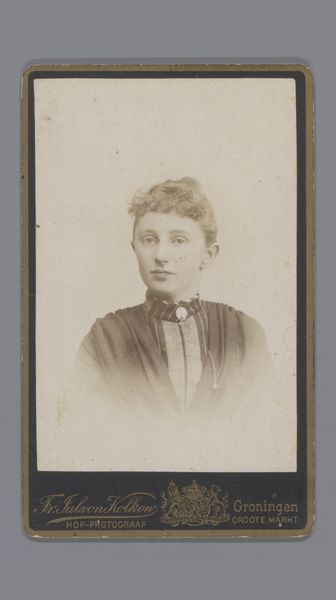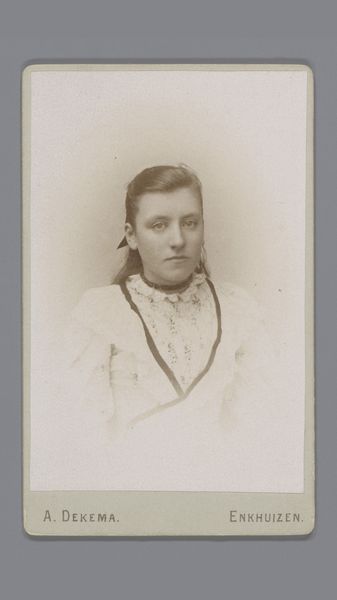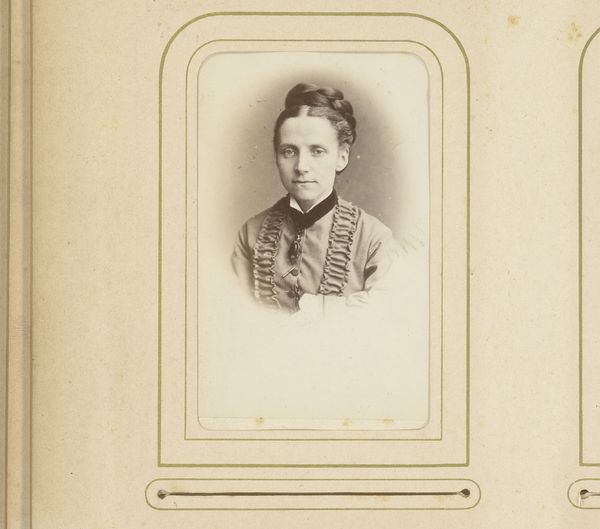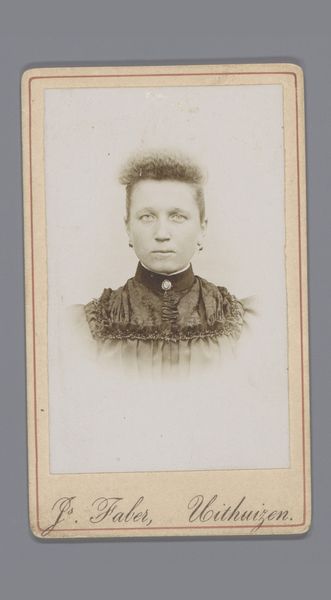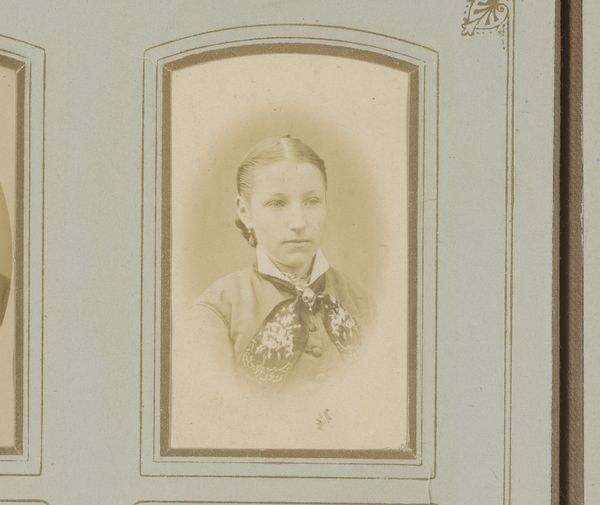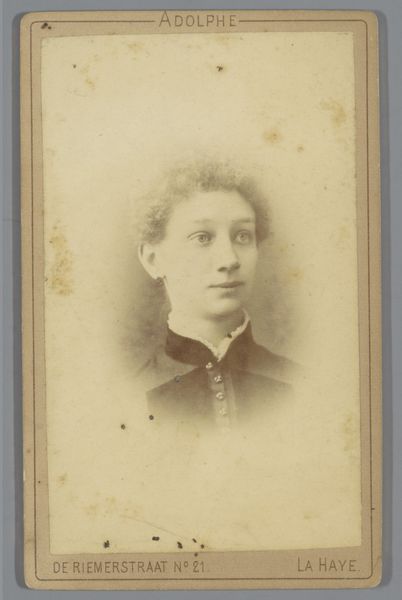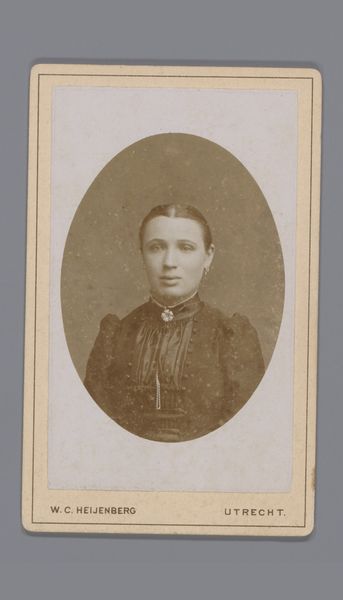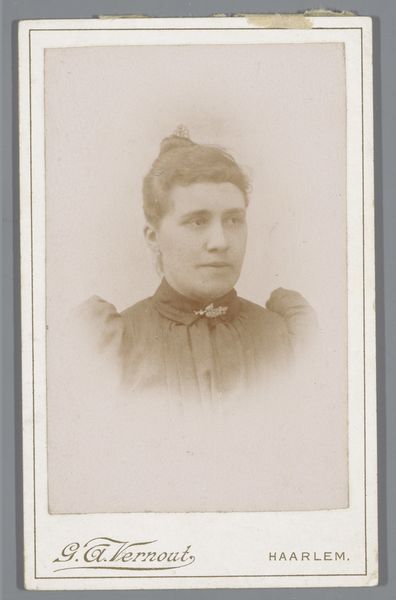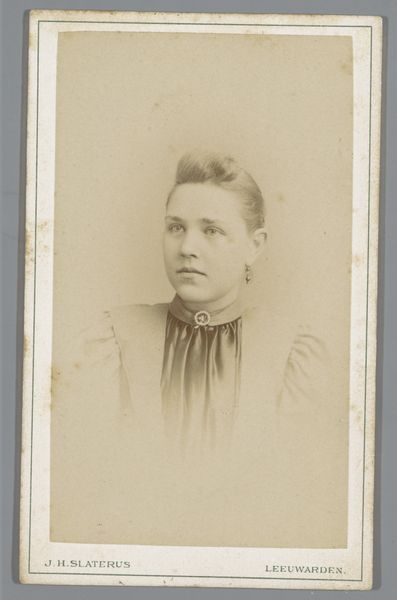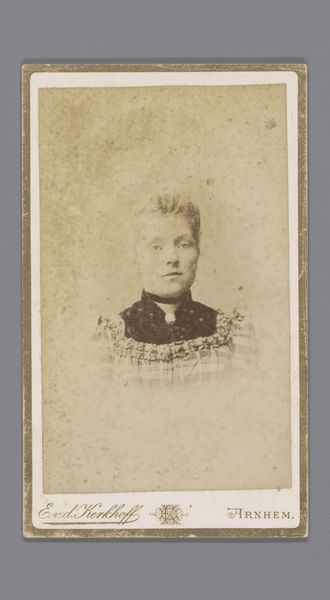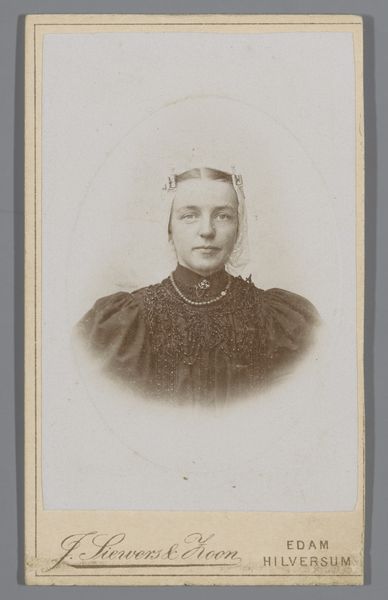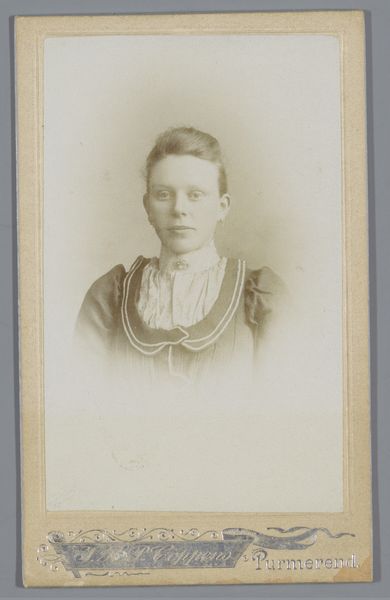
photography
#
photography
#
realism
Dimensions: height 103 mm, width 64 mm
Copyright: Rijks Museum: Open Domain
Editor: Here we have a photographic portrait, "Portret van een onbekende jonge vrouw" from somewhere between 1865 and 1885, created by Albert Dekema. It has a remarkably soft and muted quality for a photograph. What strikes you about it? Curator: The most compelling aspect, structurally, is the sharp contrast achieved despite the muted tonal range. Consider the geometric rigidity of the backdrop juxtaposed with the ornate frills adorning the sitter’s garments. This opposition generates a compelling tension. The composition itself adheres to a rather conventional symmetry, drawing the eye directly to the subject's face, but the photographer interrupts the conventional approach to photography, I think, with surface manipulation that softens the image and de-emphasizes clarity of the forms. It begs the question, where are we placed in our relation to what it represents? Editor: That’s fascinating! I hadn't considered the tension between the backdrop and her clothing before. Do you see that as a deliberate artistic choice by Dekema, or just a product of the photographic process of the time? Curator: That’s the critical formal question. Was Dekema subverting conventional ideals? We might ask ourselves: Does the subversion add an ironic component that acknowledges an inevitable relation with the represented referent? Consider also the deliberate obfuscation introduced via his unusual photographic development methods. The chemical processes at play contribute meaningfully to the ultimate visual form. Editor: I see what you mean. It's like he's highlighting the artifice of the portrait, even while trying to capture a realistic likeness. It makes you think about how we construct images and meanings. Curator: Precisely. Through this manipulation, Dekema is encouraging a meditation on representation itself, rather than merely presenting a straightforward depiction. The philosophical stakes in this portrait may be higher than previously conceived! Editor: Well, thank you! I have so much more to think about, now, considering the forms rather than the simple likeness. Curator: My pleasure.
Comments
No comments
Be the first to comment and join the conversation on the ultimate creative platform.
